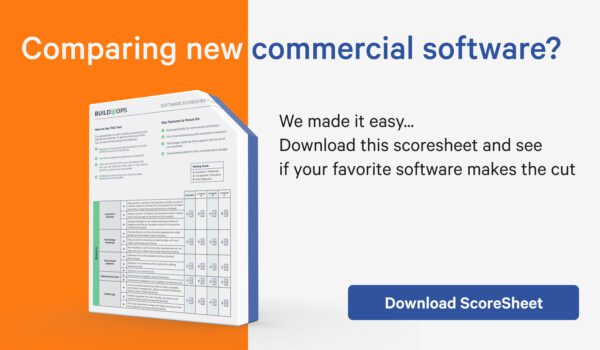
“How Much to Charge for House Cleaning” is a financial query reflecting the complexity behind establishing a service fee for residential cleaning tasks. The question is context-sensitive, factoring individual cleaning service levels, frequency, geographic location, and local market rates. Professionals and businesses must consider labor, supplies, transportation, and time spent in the customer’s home to determine fair pricing that covers overheads and yields profit.
Key components influencing the cost include home size, extent of dirtiness, specific cleaning requests, and competition prices. It may involve flat-rate pricing for standard services or hourly rates to accommodate diverse cleaning needs. A distinction is often made for deep cleanings or move-out services, typically more labor-intensive and priced differently from regular cleaning sessions.
Evaluating all these aspects, service providers strategize their pricing models. Some rely on standardized charts and checklists to approximate the time requirement, while others may adopt a more tailored approach, offering in-home assessments to provide accurate estimates, ensuring competitiveness and transparency in charge-crafting.
Content:
- Factors to Keep in Mind While Setting Rates for House Cleaning
- Decoding the Pricing Structure for your Cleaning Business
- Market Standard vs Experience: Calculating the Right Rates for Your House Cleaning Service
- Providing House Cleaning Services? Figure out What to Charge!
- Navigating Through the World of House Cleaning: A Pricing Guide
Navigating through the bustling world of house cleaning services bears a significant challenge: mastering the art of valuing your labor. You’re the specialist individuals count on for immaculate homes, yet many cleaning entrepreneurs grapple with the ultimate question: “How much should I charge?” Setting the pace on earning potential hinges on putting a price tag on cleanliness.
This article serves as a compass for house cleaning professionals seeking to harmonize quality services with corresponding monetary demands. Unpack the delicacy in pricing models to affect brilliance in every room without selling your expertise short. Finding that sweet spot in pricing not only underlines one’s adeptness in the trade but also promises sustained client satisfaction and business growth over time.
In the forthcoming paragraphs, we unlock pragmatic tools to adeptly determine house cleaning rates. Methodologies across square footage, deep clean demands, and region-specific price evaluations will be illuminated—indoctrinating professionals with the acumen to effectively affix price points amidst a competitive ecosystem.
Factors to Keep in Mind While Setting Rates for House Cleaning
When starting a house cleaning business, determining the rates to charge can be challenging. To ensure profitability, consider the local economy and cost of living. These elements impact what clients can afford and will influence your pricing structure. Research what other house cleaning services in your area are charging to remain competitive while covering your expenses.
Decide whether you’ll charge by the hour or by the job for your house cleaning services. Hourly rates offer simplicity but can penalize efficiency. Flat rates, conversely, can incentivize quick, high-quality work but may under-compensate for particularly challenging tasks. Assess each project’s requirements and your speed to find a balance that values your time and satisfies clients.
Cleaning supplies and transportation costs directly affect your bottom line. Factor in the expense of high-quality, eco-friendly cleaning products, if used, as they can be a unique selling point but also more expensive. Accounting for wear and tear on your vehicle, fuel, and travel time is crucial when setting rates, ensuring these overhead costs don’t go overlooked.
Experience and specialization differentiate your service from competitors. Higher experience justifies higher rates due to expertise and efficiency. Furthermore, if you offer specialized cleaning services, such as after-event clean-ups or dealing with hazardous materials, this expertise allows for premium pricing. Clearly explain these differentiators to clients to justify your higher rates.
Additionally, structural nuance affects workload. Larger homes or those with pets may require more intensive cleaning efforts, warranting higher fees. Consider creating a tiered pricing system to account for such variations and give clients clear options. Frequent clients could also be offered discounts, encouraging loyalty while maintaining a fair income. Keep these factors in mind to set reasonable, profitable rates for your house cleaning business.
Decoding the Pricing Structure for your Cleaning Business
Understanding your cleaning business’s pricing structure is pivotal for success. Begin by analyzing the cost of labor, as it’s typically the most significant expense. Determine a fair hourly wage for yourself and any employees, considering factors like skill level and local minimum wage laws. This foundation ensures labor costs are covered before deciding on final pricing to customers.
Invest in a detailed cost analysis, encompassing not only direct expenses, like cleaning supplies but also indirect costs such as insurance, advertising, and administrative tasks. Establishing a clear understanding of your total operational costs helps you set a price that’s not only competitive but also profitable. Make sure your rates leave room for these less obvious expenditures.
While setting rates, also consider the service frequency. Often, businesses offer lower rates for regular clients versus one-time deep cleans. This pricing strategy can foster ongoing customer relationships and a steadier income stream. Determine discounts that incentivize repeat business without substantially undercutting your profits, thus achieving a sustainable balance.
In structuring your prices, market perception plays a critical role. Evaluate whether your goal is to position your service as a budget option or a premium offering. Your pricing signals your business’s place in the market, so align your rates with the value proposition and customer experience you intend to deliver. This alignment helps attract your target clientele.
Finally, implement a flexible pricing strategy that accounts for variables such as location size, condition, and specific customer requests. Dynamic pricing allows you to adjust for these factors, maintaining fairness for both the business and the client. Always provide clear, detailed estimates to clients, ensuring transparency and building trust. With a sound pricing structure, your cleaning business will be well-positioned for profitability and growth.
Market Standard vs Experience: Calculating the Right Rates for Your House Cleaning Service
In the house cleaning industry, market standards provide a benchmark for setting rates, yet experience adds significant value. Gather information about local market rates as a starting point, but weigh your experience heavily. Experienced cleaners offer reliability and efficiency, qualities that warrant higher compensation. Adjust your rates to reflect your proficiency, not just the going market rates.
As you gain experience, regularly re-evaluate your pricing. With each successful job, your skills improve and your reputation grows. These accomplishments justify incremental rate increases. Carefully time these adjustments, communicating them to your clients with tact, ensuring they understand the value they receive from your enhanced expertise and reliability.
Despite your experience, remain sensitive to the local market conditions. Excessive rates, even if based on unparalleled expertise, may deter potential clients. Strive for a balance where your prices are fair for your high-level skills and reflective of the area’s economic climate. This equilibrium helps retain and attract a diverse client base.
Offering tiered service levels can cater to various client needs and budgets, while also showcasing your experience. Basic packages might align more closely with market standards, while premium offerings leverage your expertise for higher-end tasks. Clearly delineate the benefits of each tier to provide options without undervaluing your expertise.
Maintain a keen awareness of the additional factors at play, such as specific job complexity, customer loyalty, and demand for your services. Consider these alongside your experience and market rates to formulate a comprehensive pricing strategy. This multifaceted approach allows you to competitively and justly charge for your house cleaning services.
Providing House Cleaning Services? Figure out What to Charge!
If you’re launching a house cleaning service, setting the right charges is crucial. Start by understanding your service value and how it translates into pricing. Assess the quality, speed, and uniqueness of your work compared to others. Charging too little may devalue your service, while pricing too high could limit your customer base. Finding a middle ground is key.
Differentiate your offering with added services or specialized cleaning. Can you provide organic or allergen-free cleaning products? If so, slightly higher rates may be justified and appreciated by a niche clientele. Factor these unique selling points into your pricing strategy, ensuring they reflect the additional value and costs involved.
Charge appropriately for time and effort, particularly for larger or more challenging spaces. A detailed square footage rate can account for size, while a difficulty surcharge could apply to homes with pets or high clutter. Be transparent with clients about these criteria, so they understand the rationale behind your pricing.
Consider time-based or value-based pricing models. With time-based, you charge per hour worked, a straightforward and easily understandable method. Value-based goes beyond mere time spent, considering the overall value delivered, such as convenience or the peace of mind of having a clean home. Choose the model that aligns with your business approach.
Remember, flexibility in your pricing can yield benefits. Being open to negotiation, within reason, can show customer care and foster long-term relationships. Nevertheless, establish floor prices to ensure profitability. An adaptive pricing model can cater to various client needs while safeguarding your business’ interests.
Navigating Through the World of House Cleaning: A Pricing Guide
Entering the house cleaning industry requires a firm grasp of pricing strategies. It’s a balancing act of ensuring profitability without deterring customers. Starting off, analyze your direct costs such as labor, supplies, and transportation. This baseline is pivotal for setting prices that cover costs while remaining attractive to clientele.
In this competitive market, setting your service apart with distinct features can support premium pricing. Maybe your team utilizes exclusive cleaning methods or you offer flexible scheduling. These distinguishing aspects enhance perceived value and justify higher rates. Communicate these benefits to customers, reinforcing the premium service they receive.
Adjust your rates to reflect the level of cleaning required; not all jobs are equal. Factor in the size, condition, and specific requests of each space. Establish a clear pricing structure that accommodates these variables without becoming overly complex. That way, clients can anticipate costs, and you avoid undercharging for labor-intensive jobs.
Consider the frequency of service when setting prices. Offer incentives for regular cleanings, such as price reductions for weekly or monthly services. This approach can secure ongoing work and stable revenue, but make sure these discounts don’t cut too deeply into your profit margins. Striking the right balance is paramount for long-term success.
Lastly, stay abreast of industry pricing trends and adjust your rates accordingly. As your business evolves, so should your prices. Regularly review and fine-tune them, ensuring they reflect current market conditions and the quality of your service. A well-informed pricing strategy can pave the way for a flourishing house cleaning business.


